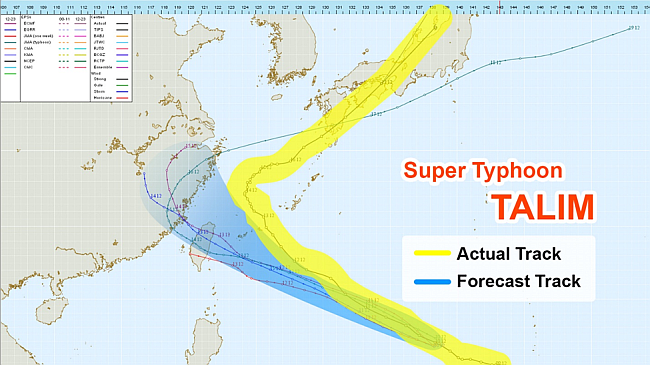Super Computer Super Accurate?
Super Computer Super Accurate?
CHOW Man-chung, CHAN Ming-san and YEUNG Kwok-chung
April 2018
In recent years, you may see from time to time headlines such as "Typhoon may hit Hong Kong next week". Yet checking the Hong Kong Observatory's website, there is no sign of any "typhoon" at all. So where does the typhoon come from?
Supercomputers are now used by many meteorological agencies around the world to run numerical models for weather forecasting. Some mobile applications with the function of providing numerical model predictions have also emerged. Users can easily make reference to such apps on their smartphones to obtain information on changes in the weather; and the media also like to "whip up the storm" to make news. But are these predictions always reliable?
For the same weather system, observational data gathered by different meteorological agencies can differ, depending on the types of observation instruments used, area of coverage of observations, data collection methodology, analysis and prediction algorithms etc. Such differences in the initial data ingested by the numerical models, even though the differences may only be small, could lead to vastly different and contrasting prediction outcomes. In general, the longer the forecast period, the larger is the uncertainty. The deviation may also increase accordingly. Take, for example, the case of Super Typhoon "Talim" in September 2017. Some numerical models at the early stage predicted that "Talim" would cross the Luzon Strait or Taiwan and head towards the coastal areas of Guangdong and Fujian. However, "Talim" eventually made a turn east of Taiwan, crossed the East China Sea and hit Japan.
For more complex and intricate weather systems such as rainstorms of a volatile and changeable nature, forecast results from numerical models may vary even over short forecast periods. Therefore, it is never clever to over-rely on predictions based on just a couple of individual computer model simulations. It would be better to consult official meteorological agencies that provide authoritative forecasts based on a comprehensive assessment of local and overall situations, and regularly check for the latest updates in the forecast and warning messages issued.

Figure 1 The actual and forecast tracks of Super Typhoon TALIM.